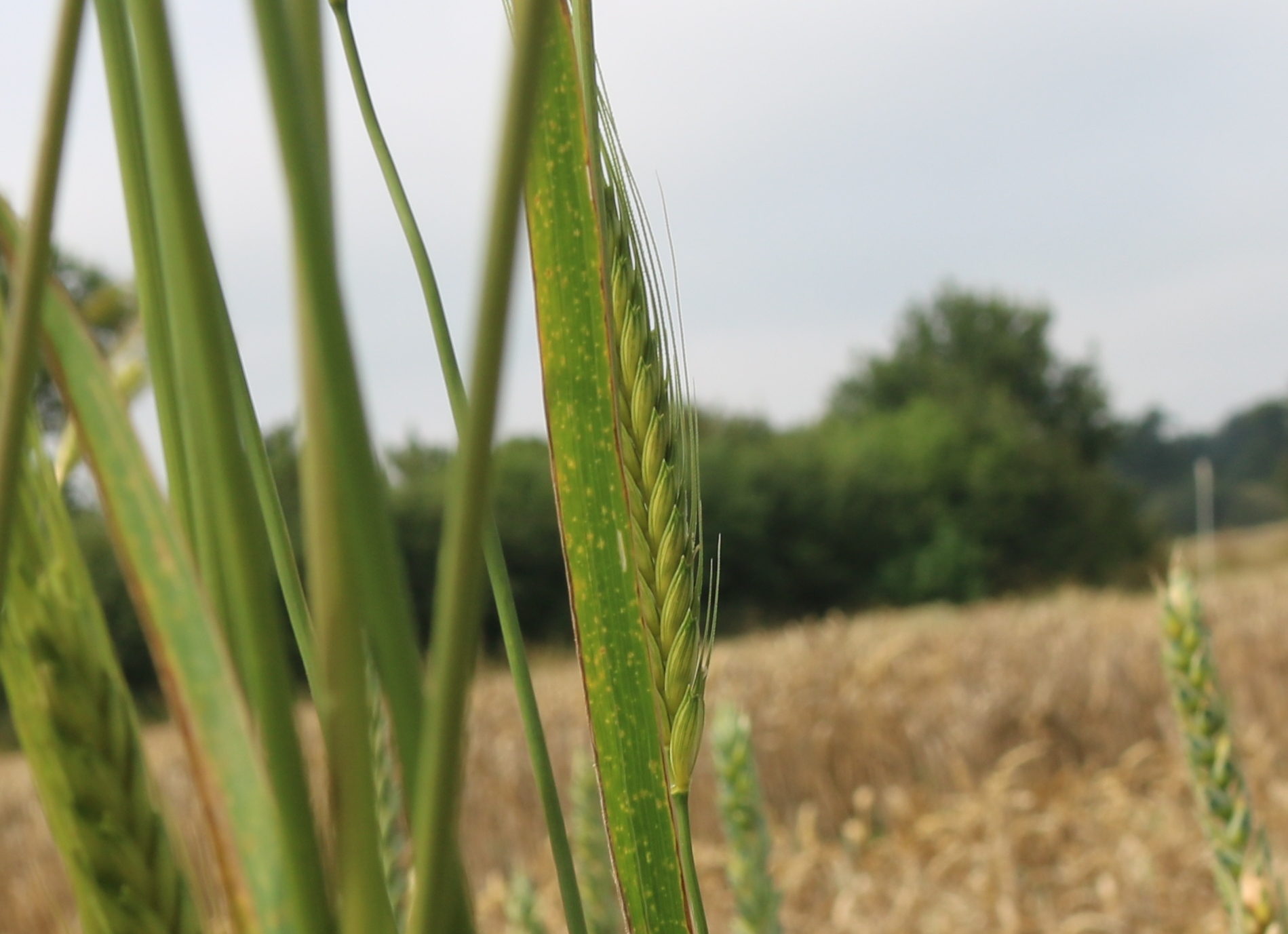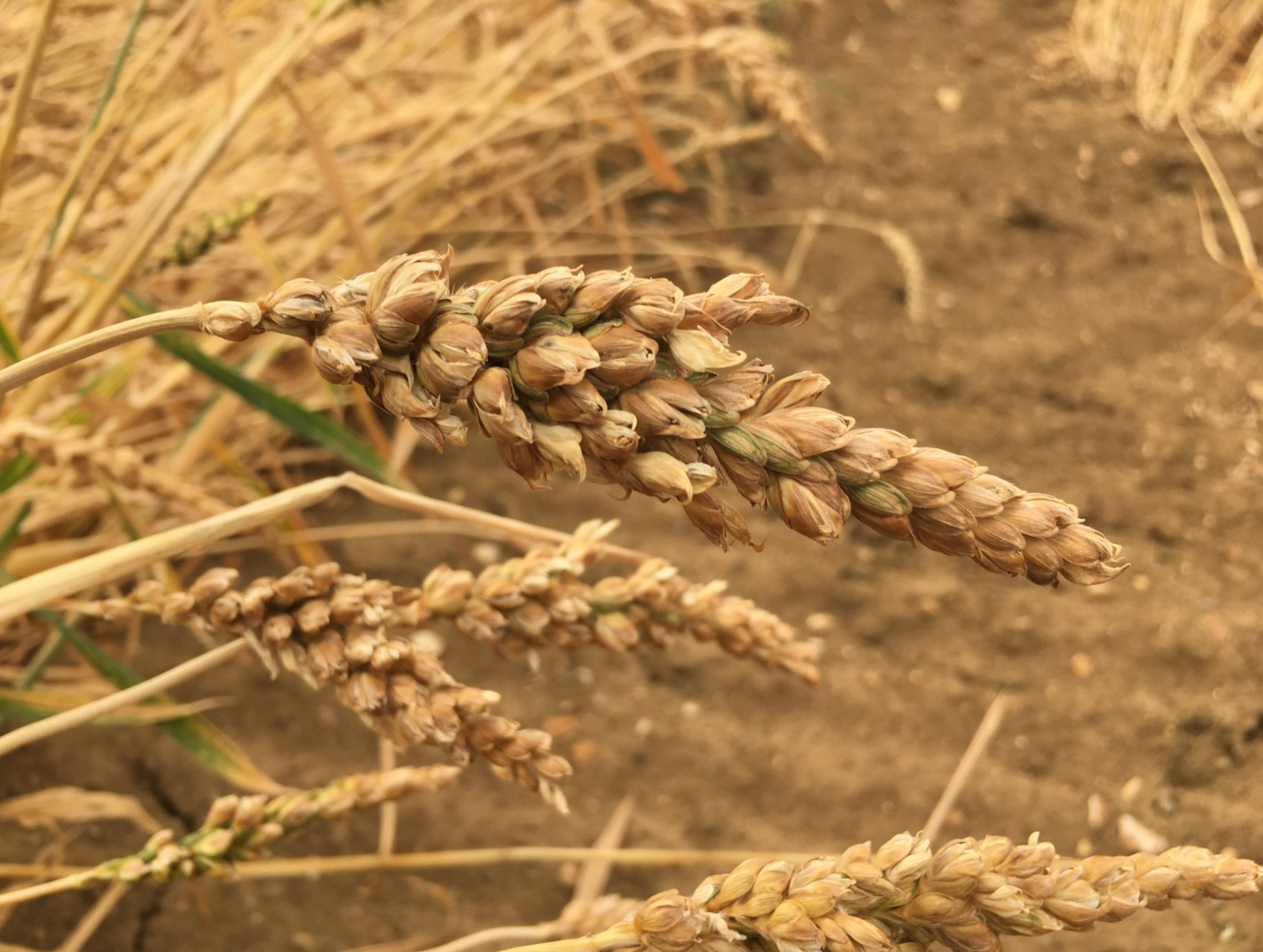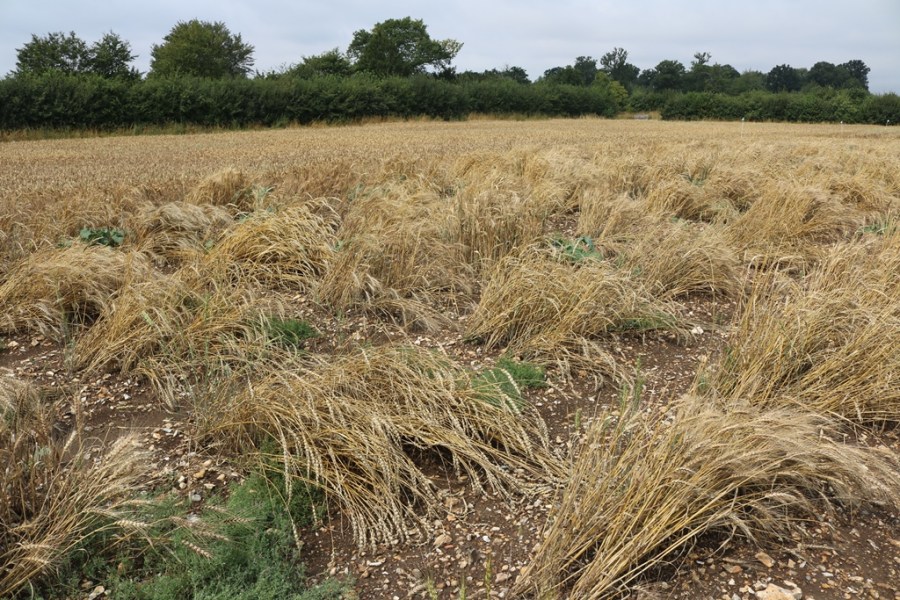Slug-resistant wheat may be one the gems lying in pre-breeding plots, and there are opportunities for growers to get involved. CPM brings together some of the highlights from field trials.
If it truly resists slugs, that will be a very valuable trait.
By Tom Allen-Stevens
Farmers are being given the opportunity to grow a wheat variety scientists believe may be resistant to slugs. “We decided to screen some of the novel Watkins material for slug resistance as this was identified as a priority,” says Prof Simon Griffiths of JIC who leads one of the DFW work packages.
JIC entomologists set up feeding experiments – a set of choice chambers that allows slugs to choose at random varieties they would like to graze and those they prefer to avoid. “One wheat was consistently spurned – Watkins 788,” he reports.
This was taken into small plot field trials in 2015/16 and the results confirmed the initial findings. But the research hasn’t progressed any further. “We don’t know yet whether this wheat truly resists slugs or whether they’d still eat it in a field situation where there’s no other choice.”
So larger, field-scale plots are needed, which is where grower involvement comes in. “We’re looking for farmers to take part in on-farm trials who’ll plant an area of around 0.4ha of Watkins 788 in a field prone to slugs as part of a scientific study – we think that will be an area sufficient to provide the optimal foraging distance to study the slugs’ behaviour,” says Simon.
He cautions that the wheat is an old variety that would perform fairly poorly in every other respect next to a modern wheat. “But if it truly resists slugs, that will be a very valuable trait and we’ll want to do some work to identify the QTLs.” These quantitative trait loci allow researchers to link phenotypes to specific genetic regions. It’s the first step in capturing a trait that can subsequently be bred into commercial lines.
- The slug trial would be run as a Rothamsted FarmInn farmer-led trial and wouldn’t be planted until autumn 2021 to allow enough time to multiply up the seed required. Those interested in taking part should contact the British On-Farm Innovation Network (BOFIN) by 30 Sept 2020.
Lines of interest

The mottling on the leaf of this diploid variety is where the plant protects itself from attack by a fungus through stopping the infection.
The plots at Rothamsted in Herts illustrate the raw state some of the DFW wheats are in. Close to harvest, Prof Kim Hammond-Kosack conducts a tour for CPM, pointing out lines of particular interest.
“This is where we’re selecting lines that show particular promise for disease resistance. Some material is in the field for the first time, and we just have an ear row, derived from just one ear, while others are more substantial 2m wide plots of six rows.”
Recent successes through the plots include the discovery of a very robust resistance to yellow rust. “We first identified the lines as far back as 2007, and they’ve withstood all the changes in races that have taken place since. The resulting NILs are currently in the Academic Toolkit and also in breeders’ observation plots.”
She comes to one line that appears to have a fine mottling on the leaves but it’s completely clear of disease. “This is Triticum monococcum, einkorn wheat, a diploid,” she explains. “The mottling is where the leaf protects itself from attack by a fungus through stopping the infection. It’s resistant to septoria, yellow rust and brown rust.”
The trait was crossed into Kronos, a tetraploid, and finally to hexaploid Paragon. “It took us ten years and three strategies, but we finally succeeded and now we can study this novel trait in more detail,” notes Kim.
D stands for diversity and drought tolerance, scientists discover

The branching is a sign of the novel traits introduced through the synthetic wheats that could be transformative.
For some it would be an undesirable misfit. But an ear of wheat that appears to have branched is a thing of fascination to Dr Phil Howell, senior research scientist at NIAB, Cambridge.
“The way these wheats are developing is multi-faceted and complex and this trait seems to be slowly stabilising in a few lines. It may have unwanted side effects, such as encouraging ergot. Or it may be transformative,” he says.
The team at NIAB have been working primarily with synthetic wheats. These have been bred by returning to the original cross of tetraploid wild emmer with wild goat grass to form the modern hexaploid wheat. “We’re interested in capturing the D genome,” he explains.
“The diversity in modern wheats has been largely lost because it’s dominated by the A and B genomes. We bred 50 synthetic lines that captured the whole of the D genome and have been exploring what properties it brings to wheat. We’re looking for the phenotype of resilience.”
The wheats have been backcrossed into Robigus and Paragon, and it’s these accessions that are now out in the field, in plots from single ear rows to replicated plots looking at yield assessment.
One trait the team is looking at closely is flowering time. “We’ve identified lines with short or longer flowering times and those that flower early or late,” notes NIAB director of genetics and breeding Prof Alison Bentley. “We now have markers identified to help breeders select for it.”
This could be one of the traits related to drought tolerance, and some of the wheats have been through punishing trials to see how they fare. “Early flowering lines tend to do badly in most situations, but that can change depending on when the drought hits,” reports Dr Robert Jackson, whose been assessing the plots.
Performance has varied considerably, he says, which is helping to identify traits such as root architecture and length of growing season that influence drought tolerance. “We’re looking for types that perform well in normal conditions as well as under stress. Once we have the phenotypes, we can go searching for the genetic markers.”
High fibre wheat set to improve nation’s health
Researchers led by Rothamsted and JIC have applied some of the health benefits of wholemeal bread into the taste and texture of a white loaf. The discovery comes from identifying the wheat genes involved in controlling dietary fibre content in flour.
“We’ve been working with JIC to pin down QTLs for high-fibre traits,” explains Rothamsted’s Dr Alison Lovegrove. “It’s not a trait UK breeders select for, so isn’t found in elite varieties.”
The team found the trait in a Chinese variety, Yumai 34, but this unusual type doesn’t grow well in Europe and little is known about its genome. “We successfully crossed the high fibre trait into several other varieties. This allowed us to narrow down where in its genome the genes for high fibre are.”
The team has now identified two molecular markers and the wheats are going into the Academic Toolkit for evaluation this September. “Around 80% of the population choose white bread, so white flour that is naturally high in fibre would make a real difference to the health of the nation, as well as reducing the incidence of Type 2 Diabetes. We believe the trait doesn’t carry a yield penalty, so hope that it will one day become ubiquitous in quality wheat varieties,” says Alison.
The achievement is just one of many nutritional benefits researchers say they have identified through exploring the diversity of the wheat germplasm across the DFW programme. Bread with a high natural iron and zinc content is also on its way, following the discovery of the trait in Watkins lines that have now been crossed with Paragon.




